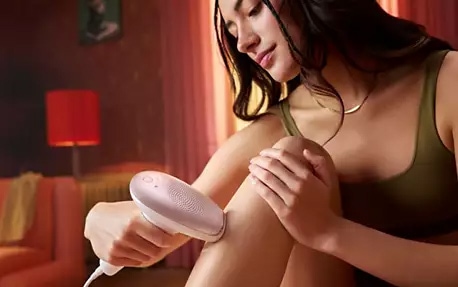
Which Philips Lumea is better for your needs?

When it comes to caring for our skin and removing unwanted hair, there is no right or wrong way; it is a personal choice. However, many of us who do choose to remove unwanted hair are faced with another dilemma – how to stop ingrown hair. Ingrown hairs can feel unsightly and uncomfortable for some, and there is a wrong and a right way of getting rid of ingrown hairs. In this article, we will explore ingrown hair facts, including: So, if you’re ready to discover just how easy it is to stop ingrown hairs and have smooth, hair-free skin with ease, read on for our guide to ingrown hair facts, myths, and tips.
Before we show you how to get rid of ingrown hairs, let’s look at the causes with 3 simple ingrown hair facts:
Here are the facts you need to know about why men and women get razor bumps: IPL targets the hair follicle, resulting in less hair growth. With reduced hair growth, you’ll see a reduction in ingrown hairs too. Why not try the Philips Lumea IPL, which offers up to 92% hair reduction in just three treatments* and six months of ingrown hair-free smooth skin after 12 treatments.**
Top tip: Worried about razor bumps? Sometimes shaving is the quick, easy, and budget-friendly option for hair removal that you don’t want to give up. Don’t worry, we have some top tips on how to avoid ingrown hairs when shaving.
Top tip: The best way to get rid of razor bumps is to stop shaving – but that doesn’t mean you need to give up on hair removal altogether. If you’re prone to a significant number of ingrown hairs, it may be time to try a different hair removal method, like IPL.
Before we show you how to not get razor bumps, it’s important to know the signs when you have them. Here are 6 indicators that men or women have razor bumps:1
Many people have different ideas of the causes and suitable methods for getting rid of ingrown hairs, but not all are correct. Here, we’ve shared 4 common myths and debunked them with true ingrown hair facts:
Fact: Ingrown hairs are caused by the way your hair grows, and even someone with the best skincare regime you may not be able to stop ingrown hairs.
Fact: If hair grows there, you can get ingrown hairs there. If you have curly or coarse hair or wear tight clothing, you have a higher risk of ingrown hair.
Fact: It may be tempting to squeeze ingrown hairs, especially if they have caused a pimple. However, squeezing can cause complications such as infection and scarring.
Fact: Not all ingrown hairs cause pain. In some cases, they can cause pimples, swelling, and discomfort. However, in others, there are no side effects with ingrown hair, and they do not cause pain.
There are two simple ways you can relieve your symptoms so you can focus on the next steps for how to get rid of ingrown hair: Now that your skin is less irritated, here’s our simple 2-step guide to getting rid of ingrown hairs:
A warm compress applied to the area of the ingrown hair will help to soothe razor bumps and irritation as well as soften the epidermis to help release the ingrown hair.
Top tip: This is a great option for those with sensitive skin. For more advice, check out our article which focuses on gentle hair removal methods perfect for sensitive skin.
If you prefer to avoid medications, why not try a gentle, natural, at-home remedy to relieve the symptoms associated with ingrown hairs?
• Tea tree oil: Mix tea tree oil with water to dilute it. The antimicrobial and anti-inflammatory properties of this oil2 could help to reduce the symptoms of ingrown hairs.
• Sugar: A paste of sugar and honey is a natural exfoliant and offers anti-inflammatory properties.3 It also helps to moisturise the skin.
Once the hair is near the surface of the skin, it should be easier to release. Use sterile tweezers or a needle to gently pull it until it is no longer curled under the skin.
Top tip: As tempting as it may be, it is important to never dig into the skin to try and release the hair as this could lead to unwanted infection setting in. Patience is key.
Exfoliating helps to remove dead skin cells and excess oils from your pores and hair follicles, which can help to release ingrown hair.
As with most things in life, the best way to get rid of razor bumps is to prevent them in the first place. Here are our top tips for ingrown hair prevention:1 So, from causes to the best way to get rid of razor bumps, to ingrown hair prevention, we’ve covered everything you need to know about ingrown hair facts, myths, and tips. With our guide, you can have smooth, hair-free skin without worrying about ingrown hairs. * When following the treatment schedule, measured on legs, individual results may vary
** Median hair reduction on legs: 78% after 12 treatments